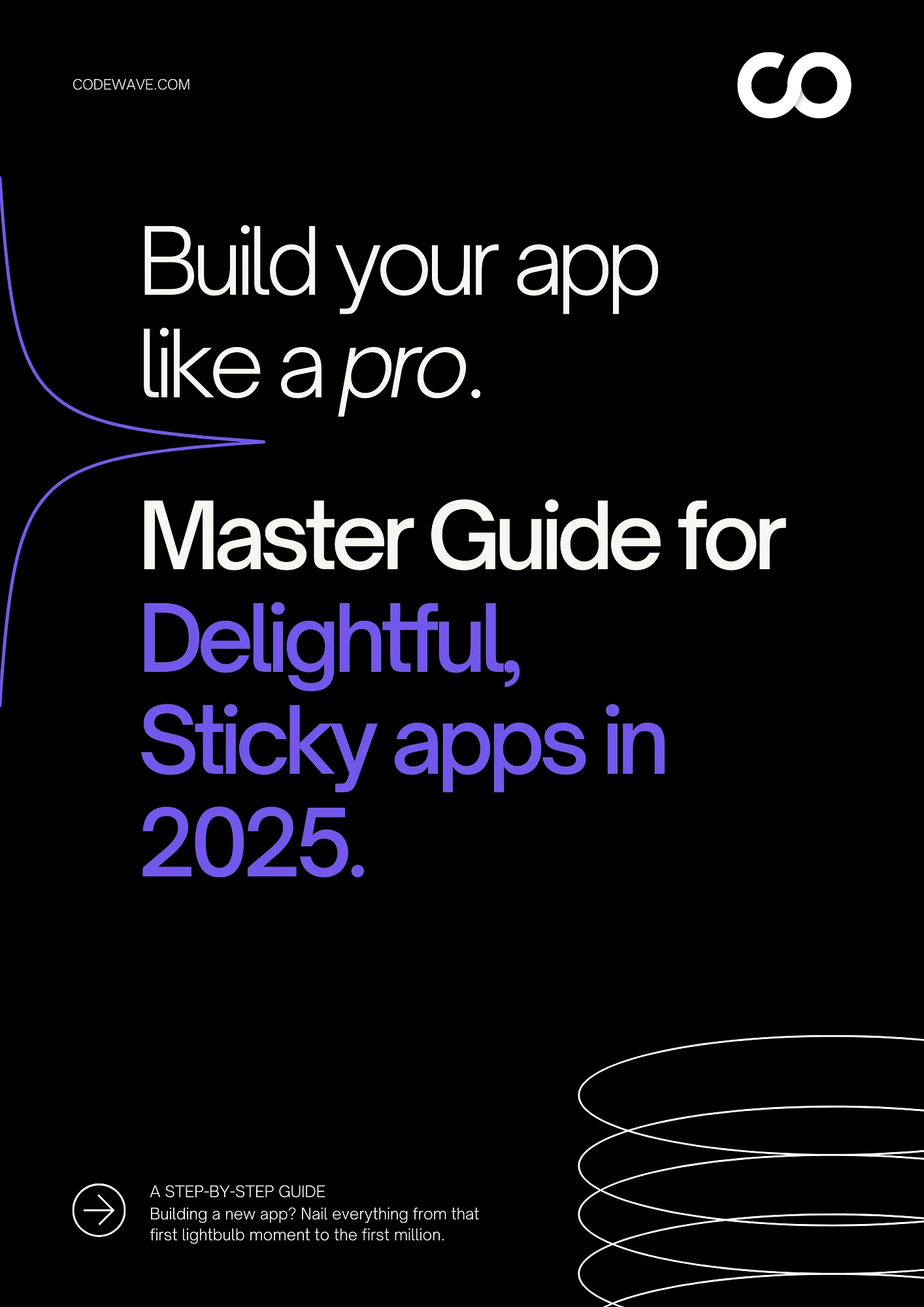Alright, let’s be honest. If you’ve ever tried building a machine learning model from scratch, you’ve probably had that moment where you stared at a blank screen and thought, There has to be a better way.
Good news: there is. It’s called not torturing yourself.
Machine learning frameworks exist so you don’t have to write every single algorithm from scratch like it’s 1995. They handle the boring, complicated, and computationally heavy stuff, so you can focus on the actual problem you’re trying to solve.
You wouldn’t code your own matrix multiplications unless you had a personal vendetta against free time, right?
In this blog, we’re cutting through the noise- just a practical breakdown of ML frameworks, what they do, and which one is right for your next model.
Let’s First Understand What a Machine Learning Framework Is
A machine learning framework is basically a shortcut to building ML models. Instead of coding every algorithm from scratch, frameworks provide pre-built tools, libraries, and automation to help you train, test, and deploy models faster.
Think of it like a power tool for AI development. Sure, you could build a house with just a hammer and nails, but why would you when there’s an entire toolkit designed to make your life easier?
With an ML framework, you get:
- Pre-written code for common ML tasks (like data processing and neural networks).
- Optimization tricks to speed up training and improve performance.
- Compatibility with GPUs & distributed computing for handling large datasets.
Now that we’ve got that covered, let’s talk about the types of ML frameworks and how they differ.
Machine Learning Frameworks for Model Development
Not all ML frameworks are created equal—some are built for deep learning, some for quick-and-easy model training, and some for massive-scale distributed computing.
1. TensorFlow
If there’s a framework that dominates the ML world, it’s TensorFlow. Developed by Google, it’s used by companies like Airbnb, Uber, and DeepMind to build everything from image recognition to recommendation systems. TensorFlow is designed to handle everything from simple machine learning models to complex deep learning architectures running on massive datasets.
TensorFlow is popular for its scalability and production-ready capabilities, making it the go-to framework for businesses and researchers who need high-performance AI models.
Key Features of TensorFlow
- Scalability: Runs on a single laptop, multiple GPUs, or large distributed systems, making it ideal for small-scale experiments and enterprise-level AI projects.
- Production-Ready: TensorFlow powers AI models behind Google Search, YouTube recommendations, self-driving cars, and healthcare AI, proving its reliability in real-world applications.
- Flexible Deployment: Supports mobile, web, and edge computing, allowing models to run on smartphones, cloud platforms, or IoT devices with minimal setup.
- TensorBoard for Visualization: A built-in tool to monitor training progress, analyze model performance, and debug issues, making ML development more transparent and efficient.
- Supports Multiple Programming Languages: While Python is the primary language, TensorFlow also supports C++, JavaScript, Swift, and Java, enabling cross-platform development.
- TensorFlow Lite: A lightweight version designed for mobile apps and IoT devices, bringing AI capabilities to edge computing with minimal resource usage.
Pros and Cons of TensorFlow
| Pros | Cons |
| Highly scalable for large-scale AI projects | Steep learning curve for beginners |
| Optimized for performance with GPU and TPU support | Requires more lines of code compared to PyTorch |
| Great for deep learning and neural networks | Debugging can be complex due to static computation graphs |
| Strong industry adoption (used by Google, Airbnb, and more) | Uses more memory, which can be inefficient for smaller projects |
| Robust community support with tons of tutorials and libraries | Not as intuitive or dynamic as PyTorch |
2. PyTorch
If TensorFlow is the powerhouse, then PyTorch is the fan-favorite—especially among researchers and developers who love flexibility and ease of use. Developed by Facebook AI (Meta), PyTorch has quickly gained popularity for its dynamic computation graph, making debugging and experimentation much easier than TensorFlow.
PyTorch is widely used in academia, research, and prototyping, and many developers prefer it for building and experimenting with deep learning models. Its intuitive interface and Pythonic syntax make it easier to learn and work with compared to TensorFlow.
Key Features of PyTorch
- Dynamic Computation Graph: Unlike TensorFlow’s static graphs, PyTorch builds computational graphs on the fly, making debugging, experimentation, and model modifications more intuitive.
- Pythonic and Intuitive: PyTorch follows standard Python programming practices, making it easier for developers and researchers to learn and use.
- Strong GPU Acceleration: PyTorch is optimized for GPU usage, enabling faster training and scaling across multiple GPUs with minimal configuration.
- Great for Research & Prototyping: Many academic papers and AI research projects use PyTorch due to its flexibility and ease of experimentation.
- TorchScript for Production: Helps transition from research models to production-ready applications by converting PyTorch models into a deployable format.
- Native ONNX Support: Supports Open Neural Network Exchange (ONNX), allowing seamless deployment on multiple platforms like cloud services, mobile devices, and edge computing.
Pros and Cons of PyTorch
| Pros | Cons |
| Easier to learn and more intuitive than TensorFlow | Less optimized for production compared to TensorFlow |
| Dynamic computation graph makes debugging and experimentation easier | Slightly slower than TensorFlow for very large-scale models |
| Great for research and academic use | Fewer deployment options compared to TensorFlow |
| Strong community support and rapid development of new features | Not as mature for enterprise production AI |
| Better error tracking due to dynamic nature | Smaller ecosystem than TensorFlow |
3. Scikit-Learn
Not every machine learning problem requires deep learning. Sometimes, traditional ML algorithms like decision trees, regression models, and clustering are all you need—and that’s where Scikit-Learn shines.
Built on top of NumPy, SciPy, and Matplotlib, Scikit-Learn is the go-to framework for machine learning practitioners who need fast, reliable, and easy-to-implement models. It’s lightweight, beginner-friendly, and great for everything from data preprocessing to model evaluation.
Key Features of Scikit-Learn
- Simple and Easy to Use: Designed with a clean API, making it perfect for beginners and non-deep-learning tasks.
- Comprehensive Algorithm Library: Includes a wide range of classification, regression, clustering, dimensionality reduction, and ensemble learning algorithms.
- Great for Small to Medium-Sized Datasets: Optimized for tabular data and structured datasets, making it ideal for financial modeling, healthcare analytics, and predictive maintenance.
- Preprocessing and Model Evaluation: Provides feature selection, hyperparameter tuning, cross-validation, and performance metrics to help improve model accuracy.
- Seamless Integration: Works smoothly with Pandas (data manipulation), NumPy (numerical computing), and Matplotlib (data visualization) for an efficient ML workflow.
- Optimized for Performance: Implements fast, memory-efficient algorithms like random forests, support vector machines (SVMs), and gradient boosting, ensuring reliable model performance.
Pros and Cons of Scikit-Learn
| Pros | Cons |
| Beginner-friendly and easy to use | Not suited for deep learning |
| Great for structured data and tabular datasets | Lacks GPU acceleration |
| Wide range of built-in machine learning algorithms | Not ideal for handling unstructured data (e.g., images, text) |
| Lightweight and efficient | Limited scalability for very large datasets |
| Strong community and well-documented | No built-in deep learning support |
4. Keras
Keras is often described as “TensorFlow, but easier.” It’s a high-level API that sits on top of TensorFlow, making deep learning more accessible to developers who don’t want to deal with complex implementations.
If you’re new to neural networks, Keras provides an easy-to-use interface for building and training deep learning models without the steep learning curve of TensorFlow.
- User-Friendly & Modular: Uses intuitive, Pythonic syntax that makes defining and training deep learning models simple—even for beginners.
- Works with TensorFlow: Serves as the official high-level API for TensorFlow, making it easy to build and deploy AI models.
- Pretrained Models: Provides access to ready-to-use models like ResNet, MobileNet, Inception, and VGG, which can be fine-tuned for various AI applications.
- Supports Rapid Prototyping: Ideal for quickly testing different architectures without complex code, making it a go-to choice for research and experimentation.
Pros and Cons of Keras
| Pros | Cons |
| Beginner-friendly and easy to learn | Less flexible than raw TensorFlow |
| Works seamlessly with TensorFlow | Not ideal for highly customized deep learning architectures |
| Great for rapid prototyping | May have performance limitations for very large-scale models |
| Supports pretrained models | Lacks some advanced ML functionalities found in TensorFlow/PyTorch |
| Built-in tools for visualization and debugging | Primarily focused on deep learning, not traditional ML |
5. MXNet
MXNet (pronounced “mix-net”) is an open-source deep learning framework designed for scalability and performance. Developed by Apache, it’s often used for large-scale machine learning models that need to run efficiently across multiple GPUs or cloud environments.
Key Features of MXNet
- Highly Scalable: Optimized for distributed computing, allowing training on multiple GPUs and cloud clusters, making it ideal for large-scale AI applications.
- Hybrid Programming: Supports both symbolic and imperative programming, offering the flexibility of PyTorch-style execution with the efficiency of TensorFlow-like computation graphs.
- Lightweight & Efficient: Consumes less memory than TensorFlow or PyTorch, making it well-suited for low-latency AI applications and embedded systems.
- Cloud-Friendly: Natively supported by AWS, Microsoft Azure, and Alibaba Cloud, making it easy to deploy and manage models in cloud environments.
- Flexible Deployment: Works across mobile devices, IoT applications, and large-scale cloud infrastructures, ensuring AI can be deployed anywhere with minimal overhead.
Pros and Cons of MXNet
| Pros | Cons |
| Optimized for multi-GPU and cloud computing | Smaller community and less support compared to TensorFlow/PyTorch |
| Highly efficient and memory-friendly | Steeper learning curve than PyTorch/Keras |
| Good for large-scale AI applications | Not as widely adopted for research projects |
| Supports multiple programming languages | Limited ecosystem compared to TensorFlow |
| AWS-backed, making it a great choice for cloud AI | Less intuitive for beginners |
Check out these top AI development companies that are shaping the future of machine learning.
6. LightGBM

If you’re working with structured data and need fast and efficient gradient boosting, LightGBM (Light Gradient Boosting Machine) is your best bet. Developed by Microsoft, it’s known for its lightweight design, fast training speed, and high accuracy in classification and regression tasks.
Key Features of LightGBM
- Lightning-Fast Training: Uses histogram-based learning to train much faster than traditional gradient boosting methods like XGBoost and CatBoost.
- Lower Memory Usage: Optimized to consume less memory, making it efficient for large datasets with high-dimensional features.
- Highly Scalable: Supports parallel computing and GPU acceleration, enabling faster training on large datasets and distributed environments.
- Handles Large Datasets: Works efficiently with millions of data points and thousands of features, making it ideal for real-world applications like finance, healthcare, and e-commerce.
- Great for Kaggle Competitions: A favorite among data scientists and Kaggle competitors, as it consistently outperforms other ML models in predictive accuracy and efficiency.
Pros and Cons of LightGBM
| Pros | Cons |
| Faster than XGBoost and other gradient boosting models | Can be sensitive to hyperparameter tuning |
| Optimized for large datasets | Not ideal for deep learning tasks |
| Uses less memory and runs efficiently | Doesn’t perform well on small datasets |
| Supports parallel training & GPU acceleration | Less interpretable compared to linear models |
7. XGBoost
XGBoost (Extreme Gradient Boosting) is one of the most popular ML frameworks for structured data and tabular datasets. It’s known for its high performance, robustness, and flexibility, making it a go-to for many machine learning practitioners.
Key Features of XGBoost
- High Prediction Accuracy: Uses a regularized boosting technique that helps prevent overfitting, making it more reliable for real-world applications.
- Parallel & GPU Acceleration: Supports multi-core CPU processing and GPU acceleration, enabling faster training on large-scale datasets.
- Handles Missing Values: Automatically learns the best imputation strategy, allowing it to work effectively with incomplete datasets.
- Feature Engineering Support: Provides built-in tools for feature selection, importance scoring, and interaction effects, improving model interpretability and performance.
- Optimized for Speed: Faster than traditional decision tree-based models like Random Forest, thanks to advanced tree learning algorithms and efficient memory usage.
Pros and Cons of XGBoost
| Pros | Cons |
| Highly accurate and widely used in ML competitions | Requires careful hyperparameter tuning |
| Supports distributed computing and GPU acceleration | Training can be slow for very large datasets |
| Great for structured/tabular data | Less interpretable than simpler models |
| Handles missing data automatically | Not ideal for unstructured data (text/images) |
8. CatBoost
CatBoost, developed by Yandex, is a gradient boosting library that’s optimized for categorical data processing. Unlike other frameworks, it handles categorical features automatically, reducing the need for manual preprocessing.
Key Features of CatBoost
- Automatic Handling of Categorical Features: Unlike other boosting frameworks, CatBoost natively processes categorical variables without requiring label encoding or one-hot encoding, reducing preprocessing time.
- Fast Training Speed: Optimized for efficiency and scalability, making it well-suited for large datasets without compromising accuracy.
- Works Well with Noisy Data: CatBoost is more robust against noisy data compared to traditional gradient boosting models, making it ideal for real-world applications.
- Great for Ranking, Classification & Regression: Frequently used in recommendation systems, search ranking, and personalized advertising, as well as general classification and regression tasks.
- GPU Support: Provides built-in GPU acceleration, significantly speeding up training times on large-scale datasets.
Pros and Cons of CatBoost
| Pros | Cons |
| Removes need for manual categorical encoding | Uses more memory compared to XGBoost/LightGBM |
| Performs well even with unbalanced datasets | Slower training on small datasets |
| Highly accurate and stable predictions | Less widely adopted than XGBoost |
| Optimized for business applications (e.g., finance, e-commerce) | Limited documentation compared to other frameworks |
While traditional ML frameworks have their place, deep learning is driving the future. Here’s a look at the top deep learning frameworks in 2025 that are leading innovation.
9. H2O.ai
H2O.ai is an open-source machine learning platform that focuses on automated ML (AutoML), enterprise-scale AI solutions, and distributed computing. It’s widely used by businesses for financial modeling, fraud detection, and healthcare analytics.
Key Features of H2O.ai
- AutoML Capabilities: Automates hyperparameter tuning, model selection, and feature engineering, reducing the need for manual ML optimization.
- Enterprise-Ready: Trusted by Fortune 500 companies for high-performance AI applications in finance, healthcare, insurance, and marketing.
- Distributed Computing Support: Optimized for big data and large-scale ML workloads, allowing seamless parallel processing across multiple nodes.
- Seamless Integration: Works with Python, R, and Apache Spark, making it easy to incorporate into existing data pipelines and workflows.
- Interpretable Models: Provides built-in explainability tools, helping users understand and trust AI-driven decisions with transparency.
Pros and Cons of H2O.ai
| Pros | Cons |
| Great for enterprise-level AI projects | Less flexible for custom ML models |
| Supports AutoML for model tuning | Requires more resources than lightweight ML frameworks |
| Scales well for large datasets | More complex to set up than Scikit-Learn |
| Strong interpretability tools for business use cases | Primarily used in enterprise settings, less in research |
10. ONNX
ONNX (Open Neural Network Exchange) isn’t an ML framework for training models—it’s a format that allows models trained in one framework to be ported and run on another. Developed by Microsoft and Facebook, it helps bridge the gap between different ML ecosystems.
Key Features of ONNX
- Interoperability Between Frameworks: Enables seamless conversion of models between PyTorch, TensorFlow, MXNet, and other AI frameworks, allowing flexibility in development and deployment.
- Optimized for Inference: Designed for high-speed model execution, reducing latency and improving performance across various hardware platforms.
- Supports Edge and Cloud Deployments: Works efficiently for AI on mobile, IoT devices, and cloud environments, making it ideal for real-time applications.
- Lightweight and Efficient: Reduces the computational overhead of running ML models, making it a great choice for production environments with resource constraints.
So, you’ve seen the list. You now know that there are at least ten ML frameworks out there, each claiming to be the best. But here’s the thing nobody tells you—choosing the right one isn’t about which is the most powerful, the most hyped, or what everyone on Twitter is talking about.
It’s about what you need.
How to Choose the Right ML Framework for Model Development
Let’s be honest—if you’re just running a simple classification task, you don’t need to touch TensorFlow. And if you’re building a deep learning model with millions of parameters, Scikit-Learn won’t cut it.
But wait—it gets trickier. Because here’s what nobody tells you:
- Some frameworks are easy to start with but won’t scale well later.
- Others are insanely powerful but require a PhD in patience to use.
- And some are so specialized that you won’t even realize you’ve picked the wrong one until halfway through your project.
So, how do you avoid wasting weeks learning a framework only to realize it’s not the right fit? Let’s cut through the noise and break down how to actually choose the best ML framework for your project.
1. What Type of Model Are You Building?
Not every framework is built for the same kind of ML tasks. Some are great for deep learning, while others are best for structured data.
- If you’re working with deep learning (CNNs, RNNs, Transformers) → Go for TensorFlow, PyTorch, or MXNet.
- If your model is based on structured/tabular data → Use Scikit-Learn, XGBoost, LightGBM, or CatBoost.
- If you need fast experimentation with simple models → Keras is an easy choice.
Quick tip: If your project involves text or image processing, deep learning is usually the way to go. If it’s numbers and structured datasets, traditional ML frameworks work best.
2. How Much Computing Power Do You Have?
Some frameworks demand high-performance GPUs, while others can run on a standard laptop.
- Need heavy GPU/TPU acceleration? → TensorFlow, PyTorch, MXNet are optimized for that.
- Working with a normal CPU-based system? → Scikit-Learn, XGBoost, LightGBM will be more efficient.
- Deploying on mobile or edge devices? → TensorFlow Lite, ONNX, or MLKit will work best.
Quick tip: If you don’t have access to a high-performance machine, choosing a lightweight framework will save you from long training times and slow debugging.
3. How Scalable Does Your Model Need to Be?
Not every model is meant to stay small. If your ML project is going into production or needs to handle massive data, scalability is key.
- For large-scale production AI models → TensorFlow, MXNet, H2O.ai work best.
- For research, experimentation, or smaller models → PyTorch, Keras, Scikit-Learn are better choices.
- For cloud and distributed computing → MXNet, TensorFlow, ONNX support multi-GPU/cloud environments.
Quick tip: If you’re just experimenting with ML and don’t need large-scale deployment, avoid TensorFlow—it’s overkill.
4. How Easy Do You Want the Development Process to Be?
Some frameworks are user-friendly, while others require deep technical expertise.
- Want something beginner-friendly? → Scikit-Learn, Keras, or CatBoost are easy to pick up.
- Need full control and flexibility? → PyTorch or TensorFlow let you tweak every detail.
- Want something automated? → H2O.ai has AutoML features to handle tuning for you.
Quick tip: If you’re just getting started, Scikit-Learn and Keras are the easiest to learn. If you want more control, PyTorch is a great balance between power and usability.
5. What’s Your Deployment Plan?
Think ahead—how will your model be deployed? Some frameworks are built for quick deployment, while others are harder to integrate.
- Deploying on web, cloud, or large-scale apps? → TensorFlow, ONNX, MXNet work well.
- Deploying on mobile/edge devices? → TensorFlow Lite, MLKit, or ONNX are optimized for that.
- Need API integration with enterprise apps? → H2O.ai, TensorFlow Serving are designed for seamless deployment.
Quick tip: If you don’t plan for deployment early, you might end up retraining your model in a different framework later, which wastes time.
Final Thoughts – Picking the Right Framework
The best ML framework depends on your use case, computing power, scalability needs, and ease of development. Here’s a quick decision guide:
| Need | Best ML Framework |
| Deep Learning (Images, NLP, etc.) | TensorFlow, PyTorch, MXNet |
| Structured Data / Tabular ML | Scikit-Learn, XGBoost, LightGBM, CatBoost |
| Fast Experimentation & Prototyping | Keras, PyTorch |
| Enterprise/Production Models | TensorFlow, H2O.ai, MXNet |
| Cloud & Distributed AI | MXNet, TensorFlow, ONNX |
| Mobile & Edge AI | TensorFlow Lite, MLKit, ONNX |
| Beginner-Friendly ML | Scikit-Learn, Keras, CatBoost |
Quick question—if you had to build a machine learning model today, would you know exactly which framework to use?
If the answer is “not really” or “it depends”, you’re not alone. Choosing the right ML framework is just one piece of the puzzle. The real challenge lies in developing, optimizing, and deploying AI models that actually deliver results—without burning time, money, or compute power.
That’s where Codewave’s AI experts step in. Whether you’re working on predictive analytics, NLP, computer vision, or intelligent automation, we help you:
Whether it’s predictive analytics, automation, or real-time decision-making, we help you:
- Custom AI/ML Development – Tailored AI models for forecasting, automation, and decision intelligence.
- Data Analytics & Insights – Transform raw data into meaningful business insights with AI-driven analytics.
- Generative AI Solutions – Develop AI-powered content generation, chatbots, and intelligent automation tools.
- IoT & Embedded AI – Integrate AI into edge devices and real-time processing systems.
- MLOps Consulting Services – Implement CI/CD pipelines, model monitoring, and lifecycle management for scalable AI deployment.
If AI is going to power the future of your business, it needs to be built right. Let’s make that happen.
Codewave is a UX first design thinking & digital transformation services company, designing & engineering innovative mobile apps, cloud, & edge solutions.







